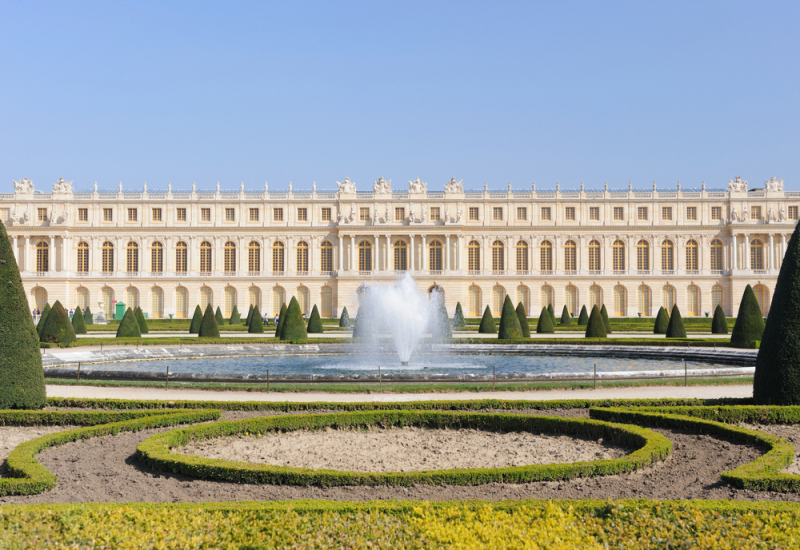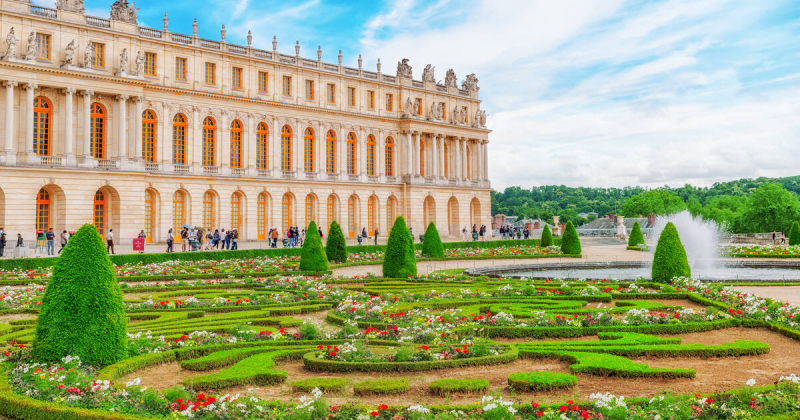Palace of Versailles

Palace of Versailles, former French royal residence and center of government, is now a national landmark. As the center of the French court, Versailles was one of the grandest theatres of European absolutism.
Perhaps the most famous room in the palace is the Hall of Mirrors (1678–89). The gallery extends over 230 feet (70 meters) and is characterized by 17 wide arcaded mirrors opposite 17 windows overlooking the gardens below. Glass chandeliers adorn the arched, ornately painted ceiling. Gilded statues and reliefs border its marble walls. The hall is flanked on opposite ends by the equally striking Salon of Peace and Salon of War.
The gardens of Versailles were planned by André Le Nôtre, perhaps the most famous and influential landscape architect in French History. Behind the palace, the ground falls away on every side from a terrace adorned with ornamental basins, statues, and bronze groups. Directly west of the deck is the Latona Fountain, designed by Le Nôtre and sculpted by Gaspard and Balthazard Marsy. To the south of the terrace, raised flower beds lead to a pair of staircases that flank the Orangerie, a grove planned by Hardouin-Mansart in 1685 that includes more than 1,000 trees. Palm, pomegranate, lemon, and orange are among the varieties represented, with tropical and subtropical species being moved indoors during the winter months.
UNESCO designated the palace and its gardens a World Heritage site in 1979. The Palace of Versailles is the most romantic place you and your partner can enjoy the incredible view, and 60,000 artworks, collections of Versailles illustrate five centuries of French History.
Address: Place d'Armes, 78000 Versailles, France
















